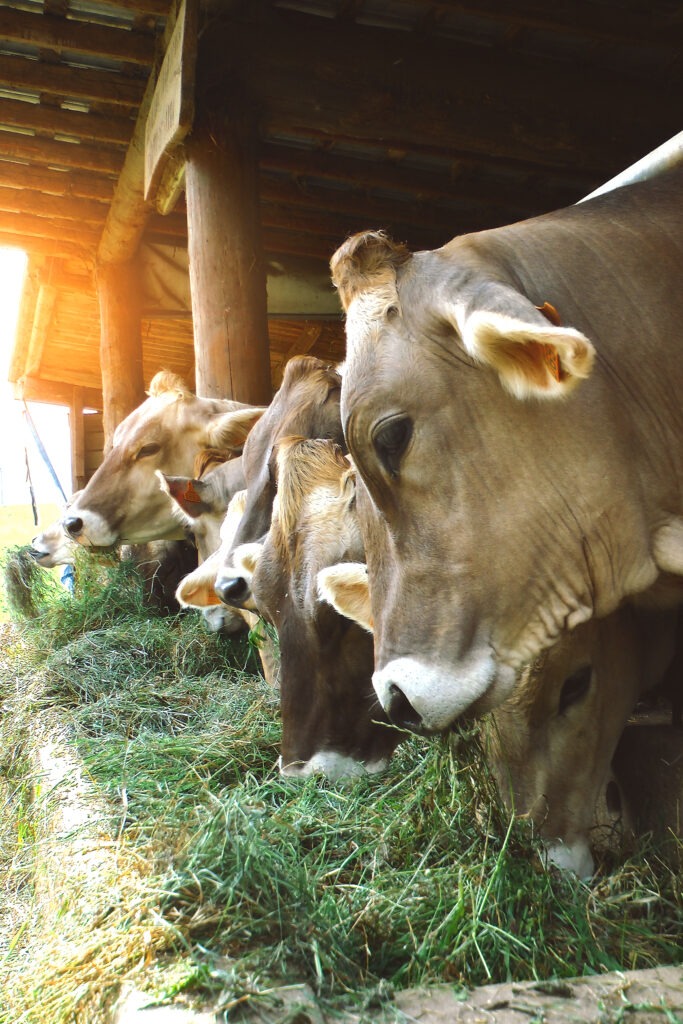For cattle and horses, hay is not just a dietary staple—it is a critical component of their overall health and well-being. The quality of hay directly affects their nutritional intake, digestive health, and even their immune system. In this article, we explore why high-quality hay is essential for maintaining healthy cattle and horses, and how it impacts their growth, productivity, and longevity.
1. Nutritional Value
High-quality hay provides the essential nutrients that cattle and horses need for optimal health. These nutrients include:
- Proteins: Vital for growth, muscle development, and repair.
- Fiber: Necessary for proper digestion and gut health.
- Vitamins and Minerals: Important for bone health, immune function, and overall vitality.
Low-quality hay often lacks these essential nutrients, leading to deficiencies that can affect growth rates, milk production in cattle, and the overall health of horses.

2. Digestive Health
Cattle and horses rely on their digestive systems to break down fibrous plant materials and extract nutrients. High-quality hay is crucial for maintaining a healthy digestive tract because:
- Adequate Fiber: Good quality hay contains the right amount of fiber, which aids in digestion and prevents issues such as colic in horses and bloat in cattle.
- Consistent Digestibility: High-quality hay is more easily digestible, allowing animals to efficiently absorb nutrients without digestive stress.
Feeding low-quality hay can lead to digestive problems, including impaction, diarrhea, and other gastrointestinal disorders.
3. Weight Management
Maintaining an ideal body condition is vital for the health and productivity of both cattle and horses. High-quality hay helps in:
- Weight Maintenance: Providing the necessary calories and nutrients to maintain healthy body weight.
- Energy Levels: Ensuring that animals have sufficient energy for growth, reproduction, and physical activity.
Inadequate nutrition from poor-quality hay can result in underweight animals, affecting their productivity and increasing susceptibility to diseases.
4. Immune System Support
The immune systems of cattle and horses are heavily influenced by their nutritional intake. High-quality hay contributes to:
- Stronger Immunity: Adequate vitamins and minerals, such as vitamin E and selenium, support a robust immune system.
- Disease Resistance: Well-nourished animals are better equipped to fight off infections and recover from illnesses.
Feeding low-quality hay, which lacks essential nutrients, can weaken the immune system, making animals more prone to diseases and infections.
5. Reproductive Health
For breeding cattle and horses, nutrition plays a pivotal role in reproductive success. High-quality hay ensures:
- Better Fertility: Proper nutrition supports reproductive health and increases the likelihood of successful breeding.
- Healthy Offspring: Pregnant animals require high-quality hay to support the growth and development of their unborn young.
Inadequate nutrition from poor-quality hay can lead to fertility issues and poor health outcomes for both mothers and their offspring.
6. Dental Health
Good hay quality also impacts the dental health of cattle and horses:
- Chewing Efficiency: High-quality hay has the right texture and length, promoting proper chewing and salivation, which aids in digestion.
- Tooth Wear: Properly structured hay helps wear down teeth evenly, preventing dental issues such as overgrowths and sharp points.
Low-quality hay can be too coarse or too fine, leading to inadequate chewing and dental problems.
Characteristics of High-Quality Hay
To ensure the health of your cattle and horses, it’s essential to recognize the characteristics of high-quality hay:
- Color: Good hay is typically a bright green, indicating it has been properly cured and stored. Brown or yellow hay may be old, moldy, or nutritionally deficient.
- Smell: High-quality hay has a fresh, sweet smell. Musty or moldy odors suggest poor quality.
- Texture: The hay should be soft and leafy, with a minimal amount of stems or coarse material.
- Purity: Good hay is free from dust, mold, and foreign objects such as weeds or debris.
- Nutrient Content: High-quality hay should be tested for its nutrient content to ensure it meets the dietary needs of your animals.
The quality of hay you provide to your cattle and horses is a cornerstone of their health and productivity. High-quality hay ensures that they receive the necessary nutrients, maintain proper digestive and dental health, and support strong immune and reproductive systems. Investing in good hay is an investment in the long-term health and well-being of your livestock.
By prioritizing the quality of hay, you are not only promoting the health of your cattle and horses but also enhancing their performance and longevity. Ensure that you source, store, and feed the best hay possible to keep your animals thriving year-round.
 Let's Talk Publications Inc. Local News and Events That Matter
Let's Talk Publications Inc. Local News and Events That Matter




